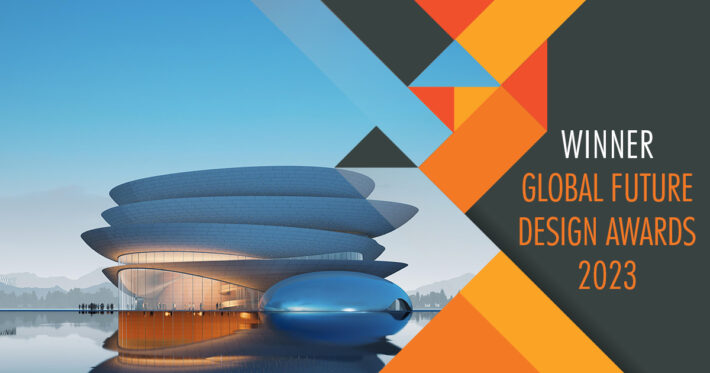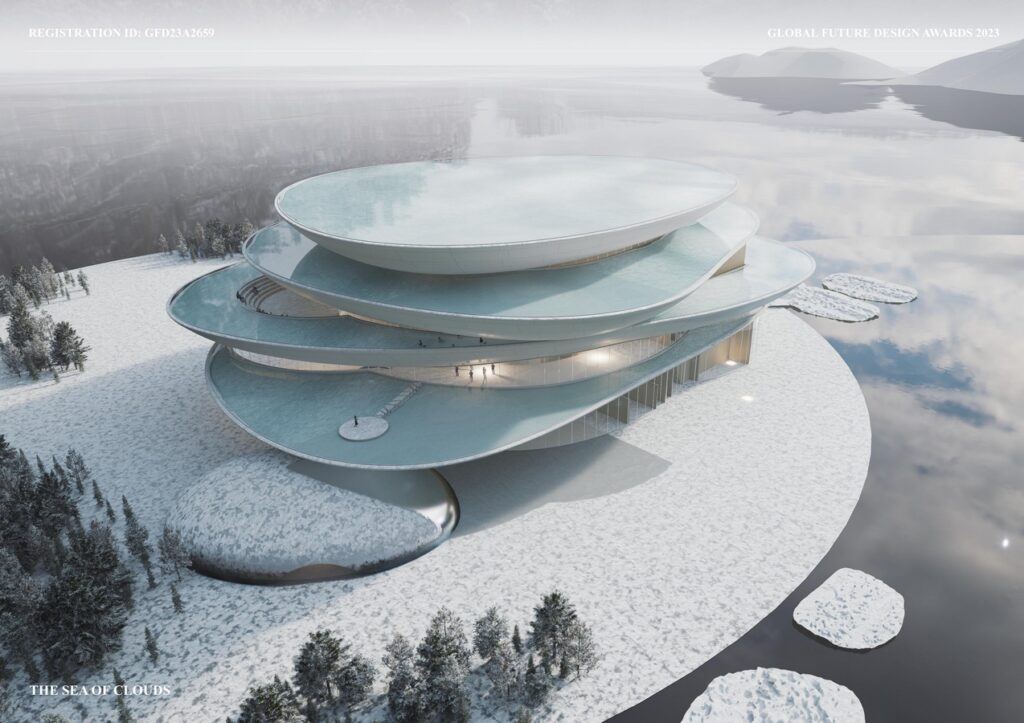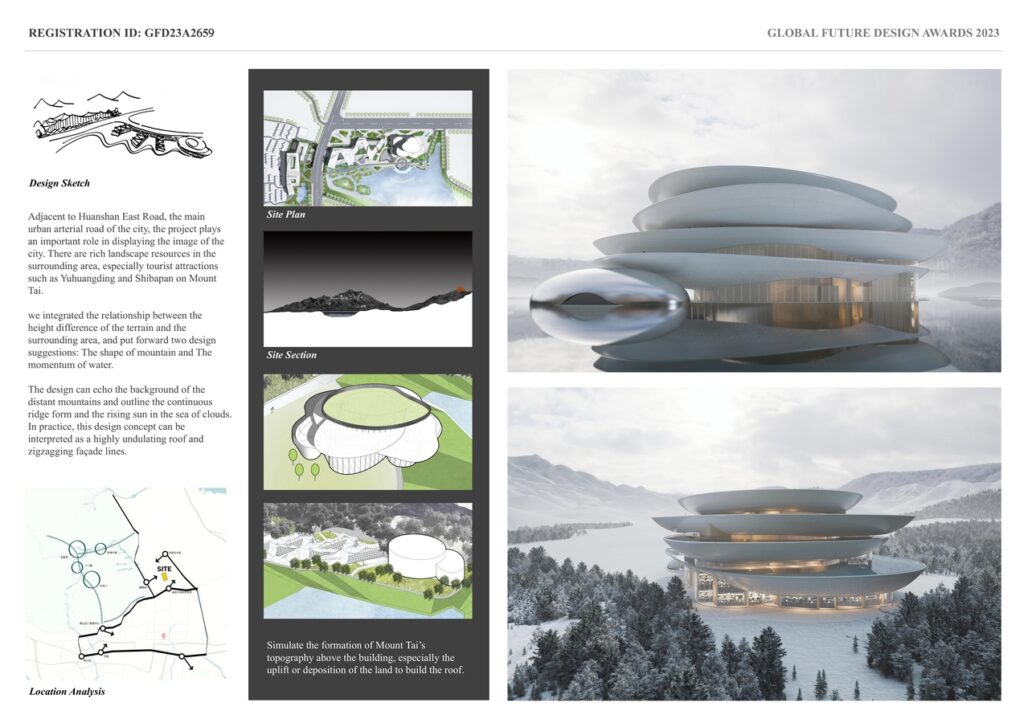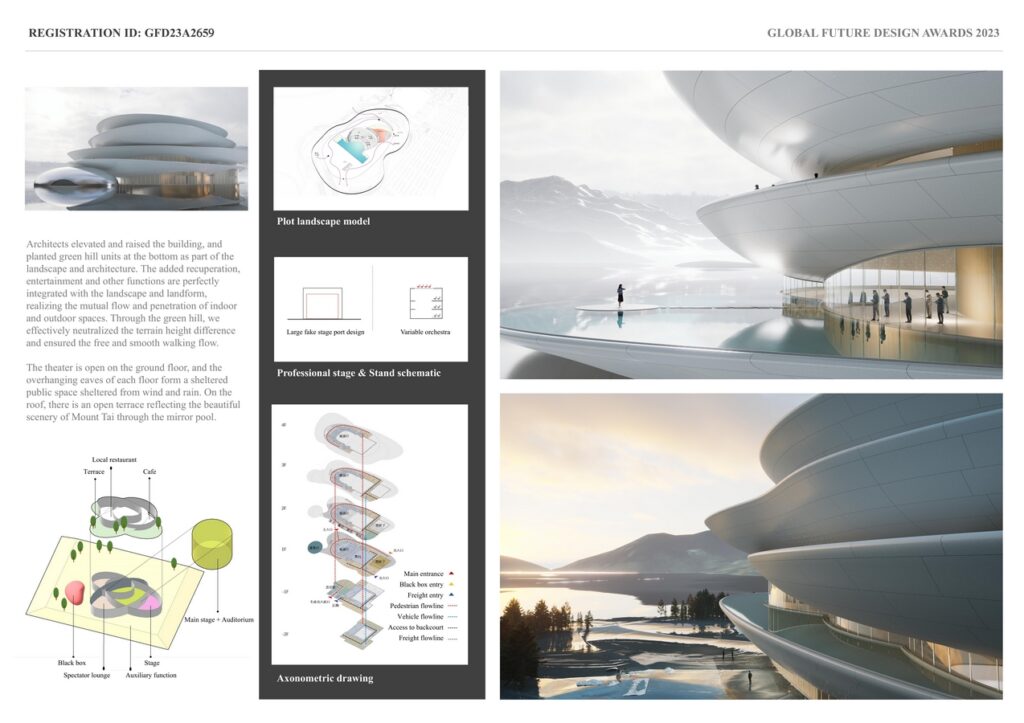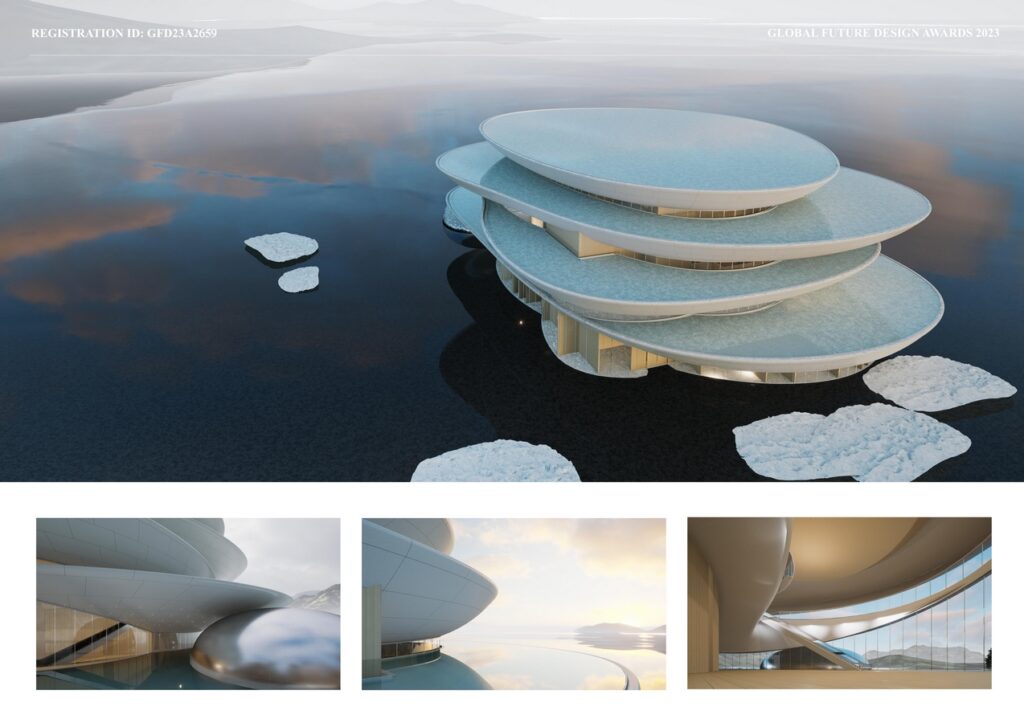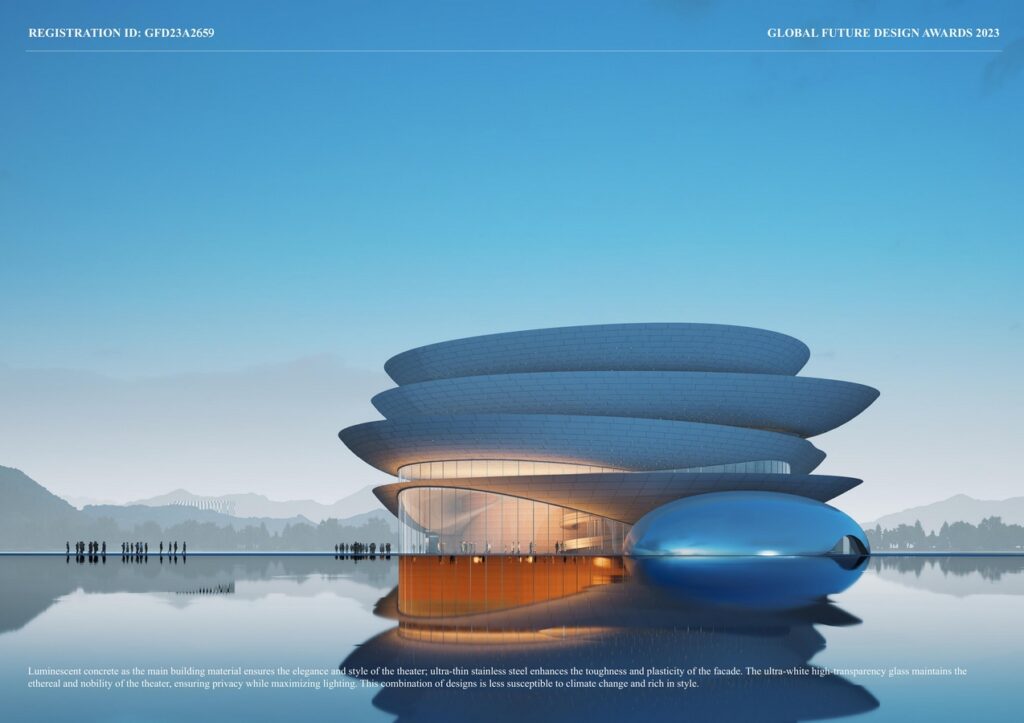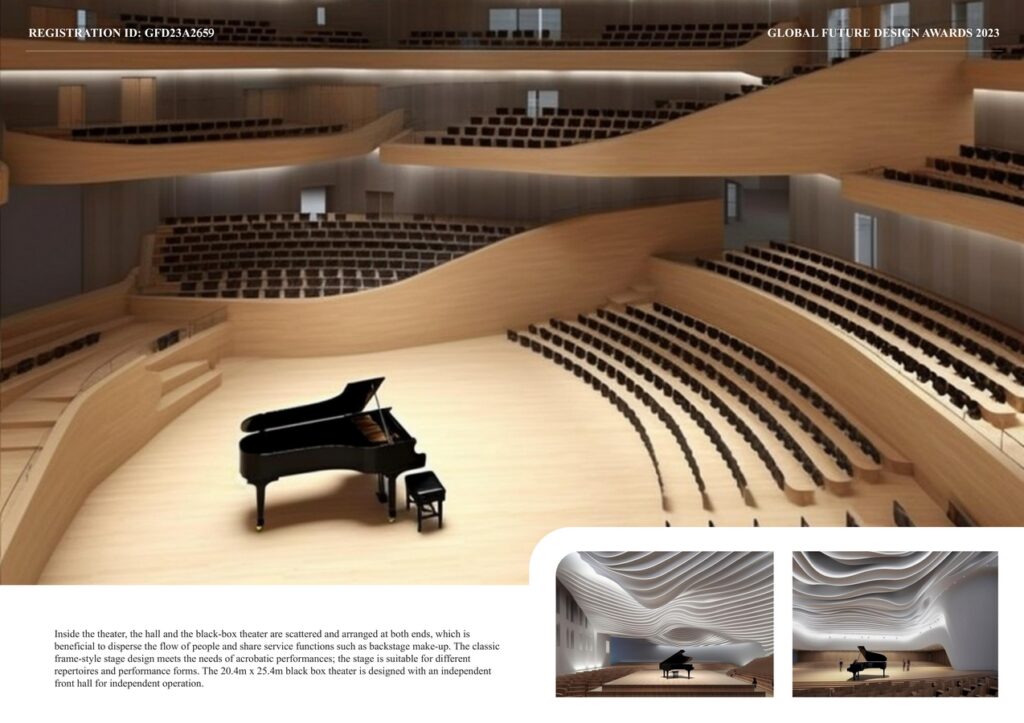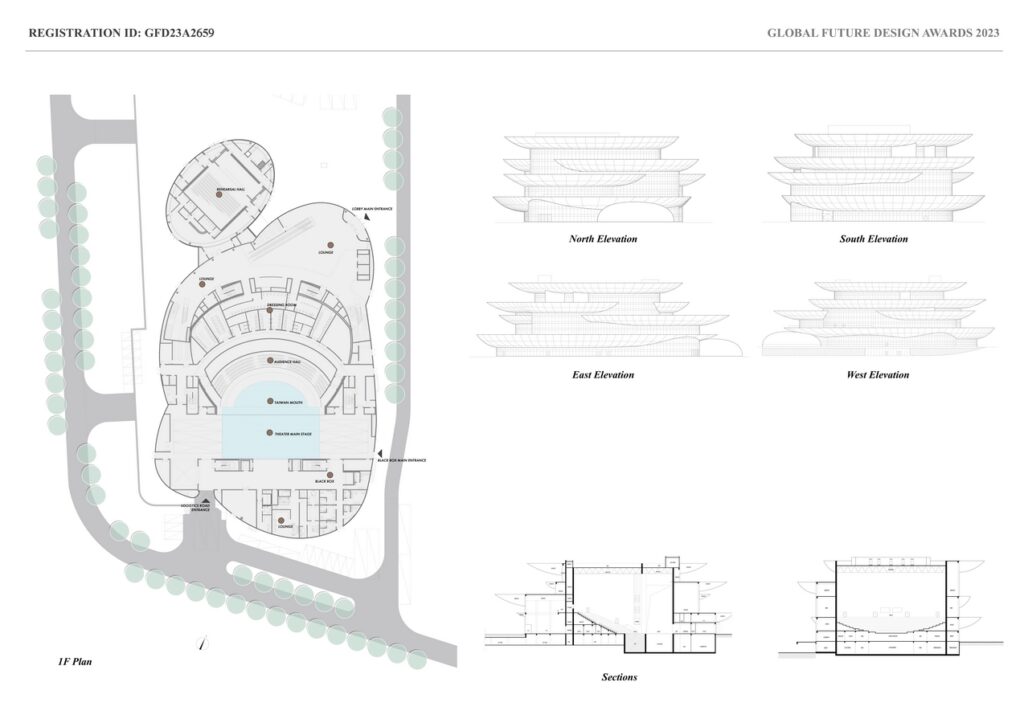Adjacent to Huanshan East Road, the main urban arterial road of the city, the project plays an important role in displaying the image of the city. There are rich landscape resources in the surrounding area, especially tourist attractions such as Yuhuangding and Shibapan on Mount Tai. Based on the existing landscape ecological resources, the project has constructed a unique cultural and ecological framework. In addition to playing a leading role, it also connects the three future sectors of culture, tourism and urban development in the region.
Global Future Design Awards 2024: Entries Open!
Take your work to the next level. Register Now…
Gold 🏆 Winner
Global Future Design Awards 2023
The Sea Of Clouds
Cultural Architecture (Under Construction)
Firm
Ruf Architects
Architect/Designer
Qian Mingbo
Design Team
Ruf Architects
Project Location
Taian, Shandong Province
Country
China
Photographer/Copyright
©Ruf Architects
Social Media Handles
Facebook: Not Available
YouTube: Not Available
Instagram: Not Available
Twitter: Not Available
Website URL
www.ruffarchitects.com
The design of traditional hotels and theaters follows the functional layout. It is monotonous in spatial layout, out of touch with the site environment, and the main body of the building blocks the sight of each other. In view of this, architects integrated the relationship between the height difference of the terrain and the surrounding area, and put forward two design suggestions:
The shape of mountain – the design can echo the background of the distant mountains and outline the continuous ridge form and the rising sun in the sea of clouds. In practice, this design concept can be interpreted as a highly undulating roof and zigzagging façade lines.
The momentum of water – from far to near, distant mountains, sea of clouds, and the rising sun are reflected in the water, constantly changing in size and brightness. The demand for visual changes from distant mountains to near water determines the changes in the skyline design and the design ideas of the viewing lines. Architects simulate the formation of Mount Tai’s topography above the building, especially the uplift or deposition of the land to build the roof. There are auspicious clouds gathering where the ridges are continuous, which outlines the dynamics in the static.
In terms of the theme, the design elevated and raised the building, and planted green hill units at the bottom as part of the landscape and architecture. The added recuperation, entertainment and other functions are perfectly integrated with the landscape and landform, realizing the mutual flow and penetration of indoor and outdoor spaces. Through the green hill, architects effectively neutralized the terrain height difference and ensured the free and smooth walking flow. Part of the overhead part is set as a parking lot or sunny garage with natural ventilation and lighting, reducing the cost of excavation.
The design concept took the fascinating “Yunhai Yupan”, one of the four great landscapes of Mount Tai, as the starting point for this design, which connects the story line of the entire design, and forms a continuously changing, rich and uniquely attractive space according to the required functions. Architects kicked off the design with a grand narrative approach, in order to clarify the landmark and revealing functions, and to strengthen the natural attributes of the site. From a distance, the building takes root in the earth and rises layer by layer Like a lighthouse, it meets the sky and merges into the lake, becoming a luminous body that is the same color as the water and the sky. The theater is open on the ground floor, and the overhanging eaves of each floor form a sheltered public space sheltered from wind and rain. On the roof, there is an open terrace reflecting the beautiful scenery of Mount Tai through the mirror pool.
Inside the theater, the hall and the black-box theater are scattered and arranged at both ends, which is beneficial to disperse the flow of people and share service functions such as backstage make-up.
The classic frame-style stage design meets the needs of acrobatic performances; the 24-meter-wide stage opening provides a greater viewing angle. The 21.4 m * 30.4 m stage has a large lip of 5.6 to 8 meters, which is suitable for different repertoires and performance forms. The 20.4m x 25.4m black box theater is designed with an independent front hall for independent operation. The rehearsal hall is set up separately, which can be operated independently, and divided into VR room, car showroom, art exhibition and other functional spaces. According to the requirements of customized acrobatic repertoire, the rehearsal hall can be sunken or heightened to meet rehearsal needs. The C-shaped surrounding moving line and efficient space utilization form a wealth of spatial changes. The landscape art gallery on the west side makes full use of the mountain and water resources.
Luminescent concrete as the main building material ensures the elegance and style of the theater; ultra-thin stainless steel enhances the toughness and plasticity of the facade. The ultra-white high-transparency glass maintains the ethereal and nobility of the theater, ensuring privacy while maximizing lighting. This combination of designs is less susceptible to climate change and rich in style.


